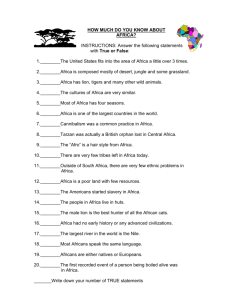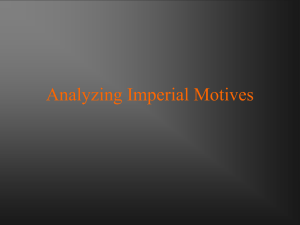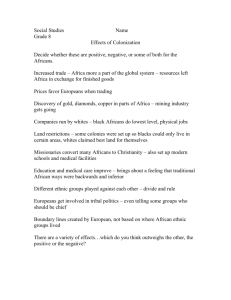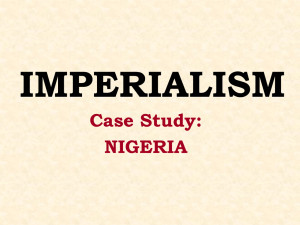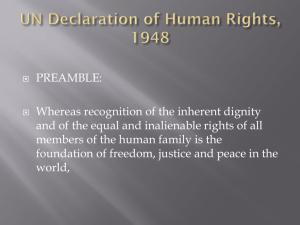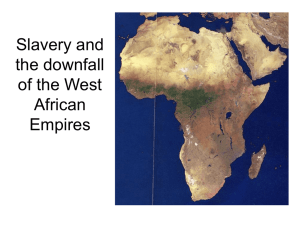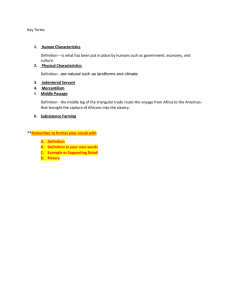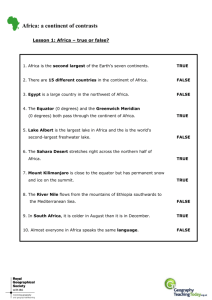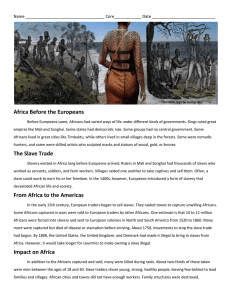Africa
advertisement
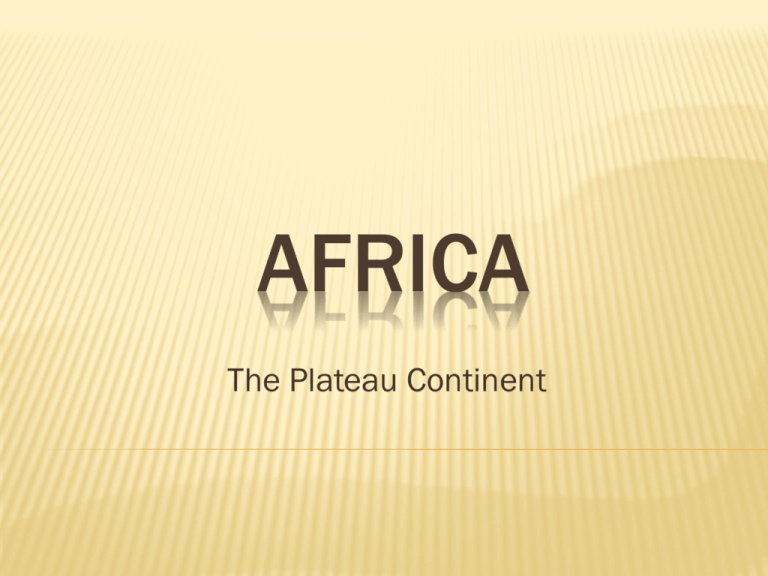
AFRICA The Plateau Continent PHYSICAL FEATURES Much of central Africa is a high, dry plateau Sahara – world’s largest desert Nile River – longest river in the world Lake Victoria – world’s second largest freshwater lake Lake Tanganyika – longest freshwater lake in the world SAHARA DESERT DESERTIFICATION GREAT RIFT VALLEY MOUNT KILIMANJARO CLIMATE ZONES What landform dominates Northern Africa? What is the climate type found along the equator? RAINY SEASON POPULATION DENSITY Largest Cities: •Cairo, Egypt •Lagos, Nigeria 1. Where is most of the population concentrated in Egypt? 2. Have you noticed a pattern in the northern part of Africa? MWANZA, TANZANIA ECONOMIC ACTIVITY What natural resource is found mainly in the southern part of Africa? What land use dominates most of Africa? What land use is the least common in Africa? WORKERS PAN FOR DIAMONDS COUNTRIES OF AFRICA 53 countries Largest: Sudan Smallest: Seychelles At least 2,000 languages spoken in Africa Swahili and Arabic are two of the most common languages EUROPEAN COLONIALISM Africa was divided up by 8 countries in Europe during the late 19th and early 20th centuries. Europeans wanted power and strategic advantage, exploited the resources of Africa, established settlements, and converted Africans to Christianity. In general, Europeans took what they wanted from Africa with very little concern about the quality of life for Africans. AFRICAN INDEPENDENCE Africans fought European imperialism since its beginnings, but this opposition gained strength after World War I and again after World War II. Many Africans resented European presence. Africans desired self-rule because they were generally treated as second-class citizens by Europeans. The World Wars also demonstrated that Europeans were imperfect and raised questions about European racism. Finally, many African soldiers were exposed to other places and they saw that European powers were weakened by the wars in Europe. AFRICAN INDEPENDENCE In 1945, many prominent leaders of Africa met in Manchester, England and drafted a resolution as an appeal to their colonial powers and a warning of what would come if this appeal was ignored. By 1960, Africa had 27 independent states. That number grew to 39 six years later, and the number became 47 by 1975. TRIBAL TRADITIONS Social life revolves around the extended family. Extended families are linked to clans, kin groups, and tribes. Religion and language is closely tied to the group that one joins by birth. LANGUAGES OF AFRICA Niger-Congo: spoken by one out of every two Africans, spread by Bantu migrations Afro-Asiatic: second-most-spoken on the continent, mainly in North Africa Nilo-Saharan: western bend of the Niger River through the Sahel region into parts of east Africa Khoisan: smallest number, found in Southern Africa, known as “the click languages” Because there is usually such a wide variety of languages spoken in one country, trade languages, such as Swahili, Hausa, Fulani, and Creole have developed for cross-cultural communication. AGRICULTURE Africa is largely a rural continent. Many young Africans are moving to the cities to find work, however, many Africans stay in the rural villages and practice subsistence farming and livestock raising. RELIGION 46 % are Christian (mainly in West, East, Central, and Southern Africa) 40% are Muslim (mainly in North and West Africa) Over 100 million practice indigenous religions

